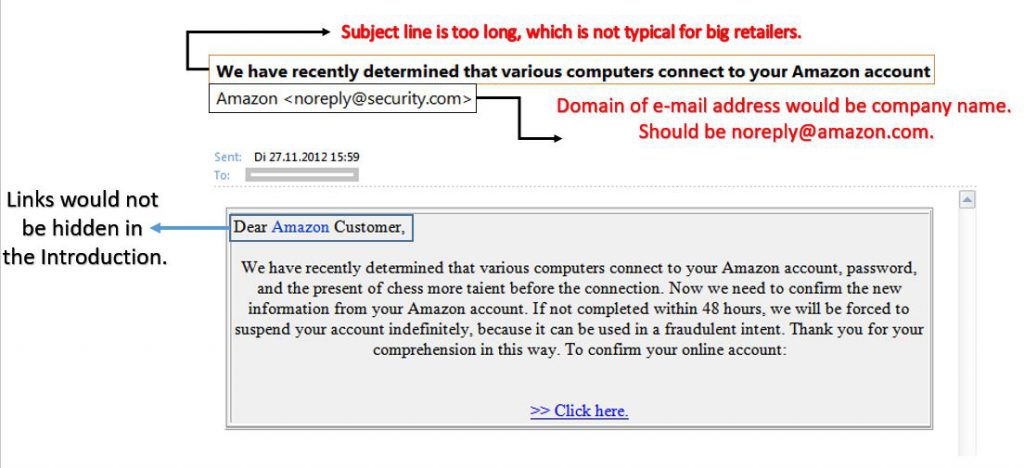We’ve all heard the age old adage “If it seems too good to be true, it probably is”. In the days of online everything, we should assume this to always be true.
One scam that will likely show up on your radar: the attempt to mimic large online retailers. For example, if you’re a customer of Amazon.com (and sometimes, even if you aren’t) you’ll see e-mails like “Your Order Confirmation: Order ID 123-456789-123456, has been shipped”.
Here are a few of the reasons scammers send these falsified e-mails. They want you to:
– Click on illegitimate links to ‘phish’ information.
– Direct you to a fake version of the retailer website, where they’ll steal your login information.
– Contact their ‘Customer service’ where they’ll ask you for your password, social security number, CVC number, or mother’s maiden name.
Please note: Online retailers, like Amazon, will not contact you out of the blue asking for sensitive information such as this.
Professional Tip: From my experience working as a Team Leader for Amazon, the easiest way to determine you’re talking to the legitimate business is to find the toll-free customer service line for the actual company, and call them to address the query. They will likely already know of the ongoing scam, having received previous calls about it.
How to tell if the e-mail you’re receiving is legit or not:
Luckily, there are almost always glaring mistakes in these imposter communications that will make determining legitimacy easy: Incorrect word order/grammar, e-mail format just doesn’t look right, phrases that are too proper, broken sentence structure, excessive punctuation (ie Contact us!!!!!!), emoticons, etc.
Here is a good example of what would not show up in a legitimate e-mail:
Let’s also examine the bulk of the message [Comments in brackets]:
Dear Amazon Customer [Would always include customer name if on the account],
We have recently determined that various computers connect to your Amazon account, password and the present of chess more taient before the connection [Nonsensical Phrase]. Now we need to confirm the new information from your Amazon account [Retailers will NEVER ask for your password]. If not completed within 48 hours, we will be forced to suspend your account indefinitely [Online Retailers never threaten], because it can be used in a fraudulent intent [Incorrect Grammar and Wordy]. Thank you for your comprehension in this way [Strange Phrasing Again]. To confirm your online account: >> Click Here [You wouldn’t be directed to a hidden link, it would look something like: https://www.amazon.com/your-account.php]
Important: If you’ve discovered by reading this that you’ve already been phished, change the password to the related account immediately. Also, contact customer service and subsequently check your online card statements.


